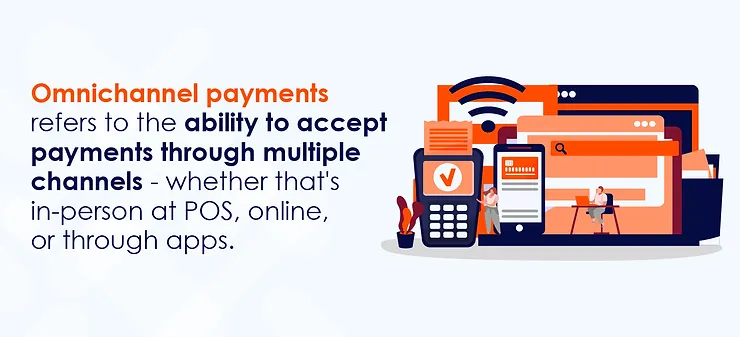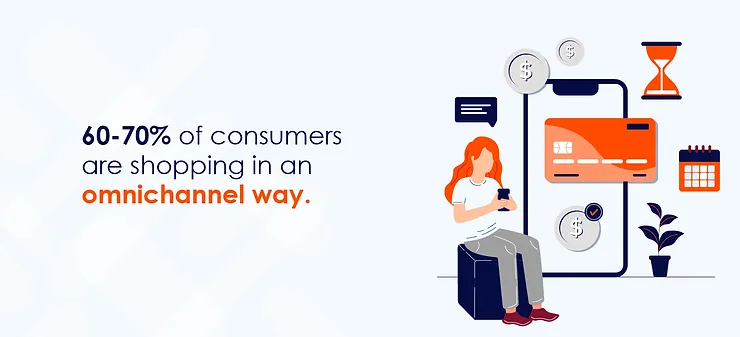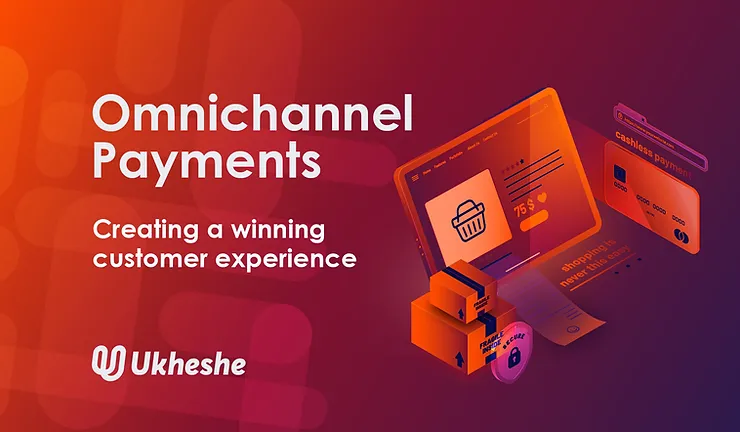As confidence in online shopping and e-commerce sites grows, more and more companies with products and services that exist and are available ‘in real life’ are also adding online availability to their offering. This is an effort to attract more customers with a seamless, omnichannel approach to browsing and buying.
Defining Omnichannel Payments: Beyond Multichannel
Multi-channel vs. Omnichannel Payments

Omnichannel payments take the concept of multi-channel payments a step further. In an omnichannel approach, all payment channels are seamlessly integrated and work together as part of a unified system. This means that regardless of the channel a customer chooses to initiate a payment, the experience is consistent, and the transaction information is synchronised in real-time across all channels.
How an omnichannel approach unifies the customer experience
An omnichannel approach unifies customer experiences across various touchpoints by seamlessly integrating different channels into a cohesive system. This ensures that customers have a consistent and personalised interaction with a brand, regardless of how they choose to engage.
Here’s a detailed breakdown of how an omnichannel approach accomplishes this:
Unified customer data: Omnichannel strategies centralise customer data, creating a single source of truth. This means that whether a customer interacts through a website, mobile app, in-store, or any other channel, the system recognises them and accesses their profile, purchase history, preferences, and other relevant information.
Real-time synchronisation: All touchpoints are connected in real time. When a customer takes an action, such as making a purchase, updating their profile, or adding items to their cart, this information is instantly reflected across all channels. For instance, if a customer adds an item to their online cart and then visits a physical store, the sales associate can see the updated cart information.
Consistent user interface and branding: The look, feel, and messaging of the brand remain consistent across all touchpoints. Whether a customer visits the website, uses a mobile app, interacts on social media, or steps into a physical store, they recognise and trust the brand’s identity.
Seamless transition between channels: Customers can start an interaction in one channel and easily transition to another without disruption. For example, a customer may browse products on a mobile app, add items to their wishlist, and later complete the purchase on the website.
Personalisation at scale: Omnichannel approaches leverage customer data to provide personalised experiences. For instance, a customer who frequently shops for a specific product category online might receive tailored recommendations when they visit a physical store.
Support for customer journeys: An omnichannel approach acknowledges that customer journeys are not linear. Customers may research online, visit a store to try a product, go back online to compare prices, and then make the final purchase through a mobile app. All these touchpoints are interconnected, providing a seamless journey.
Enhanced customer loyalty and retention: The consistent, personalised experiences foster a stronger emotional connection between the customer and the brand. This leads to higher customer satisfaction, loyalty, and an increased likelihood of repeat business.
Pillars of an effective omnichannel payment strategy
Seamless Integration: Incorporating different payment methods into a cohesive system
Unified payment gateway: Implementing a unified payment gateway allows businesses to accept a wide range of payment methods, including credit cards, digital wallets, bank transfers, and more. This gateway acts as a central hub that processes transactions, regardless of the channel through which they originate.
API integration: Utilising Application Programming Interfaces (APIs) enables the smooth exchange of data between different systems and platforms. This allows for the real-time communication needed to process payments seamlessly. For instance, when a customer makes a purchase online, the API ensures that the payment information is transmitted securely and promptly to the payment gateway.
Single customer view: A unified view of customer data is essential for seamless integration. This involves consolidating customer information from various channels, such as online purchases, in-store interactions, and mobile app activities. With a single customer view, businesses can offer personalised payment experiences based on individual preferences and behaviours.
Cross-channel data flow: Establishing a fluid flow of data between channels ensures that transaction information is consistently updated across the board. For example, if a customer makes a purchase through a mobile app, the transaction details should immediately reflect in the customer’s account, regardless of whether they later access their account through a web browser or in-store kiosk.
Real-time synchronisation: Ensuring instant updates and consistency across channels
Real-time synchronisation is the linchpin that holds an omnichannel payment strategy together. It guarantees that all channels are in perfect harmony, providing customers with instantaneous updates and a uniform experience.
Instant transaction processing: Real-time synchronisation ensures that payment transactions are processed immediately, eliminating delays that can lead to customer frustration. This is particularly crucial in scenarios where speed is of the essence, such as during online purchases or at point-of-sale terminals.
Inventory management integration: Beyond payments, real-time synchronisation extends to inventory management. When a product is purchased, the inventory levels should be instantly adjusted across all channels to prevent over-selling or stockouts. This level of synchronisation safeguards against discrepancies that can hinder customer satisfaction.
Consistent customer notifications: Whether it’s a confirmation email, a mobile app notification, or an in-store receipt, real-time synchronisation guarantees that customers receive instant updates about their transactions. This not only builds trust but also provides customers with the assurance that their payments have been successfully processed.
Live customer support insights: In scenarios where customers seek support during or after a transaction, real-time synchronisation ensures that customer service representatives have access to the most up-to-date information. This empowers them to address queries or concerns promptly and accurately.
Empowering Customer Choice: The importance of offering diverse and secure payment options

By providing diverse payment methods, businesses cater to a broader audience, ensuring that each customer can complete transactions in a manner that aligns with their comfort and financial capabilities. From traditional credit and debit cards to emerging digital wallets, bank transfers, and even cryptocurrencies, a comprehensive range of options acknowledges and respects the unique financial choices and preferences of every individual.
For all available options, it is imperative that businesses ensure that payment platforms, processes and methods are robust and secure, for their own as well as customers’ peace of mind. End-to-end encryption of data, instigating multi-authentication steps in the payment process, fraud detection programmes that identify anomalous customer behaviour, and ensuring that all regulatory and compliance issues are adhered to – and communicating all this to customers – is an important part of ensuring omnichannel payment strategies are transparent and trusted by customers.
Creating an omnichannel payment strategy is one tool in the arsenal of businesses looking to enhance user experience for their customers as well as to streamline payments, manage inventory and provide data for their marketing strategy.
The journey towards omnichannel excellence is not just a strategic move; it’s an investment in building enduring customer relationships and ensuring sustained business vitality in the dynamic and evolving world of digital commerce.





